42 aspartame on food labels
Aspartame - Food Standards Aspartame is an intense sweetener added to low-energy or sugar-free foods. It is used in foods including yoghurt, confectionery and carbonated beverages. The safety of aspartame has been comprehensively reviewed by FSANZ and other international organisations, including: Food and Agricultural Organization/World Health Organization › cancer › guideCancer: Sarcoma, Carcinoma, Lymphoma, and Leukemia - WebMD Get the basics on cancer from the experts at WebMD.
Does Aspartame Cause Cancer? Aspartame is an artificial sweetener, sold under brand names such as NutraSweet® and Equal®, that has been in use in the United States since the early 1980s. It is used in many foods and beverages because it is much sweeter than sugar, so much less of it can be used to give the same level of sweetness.
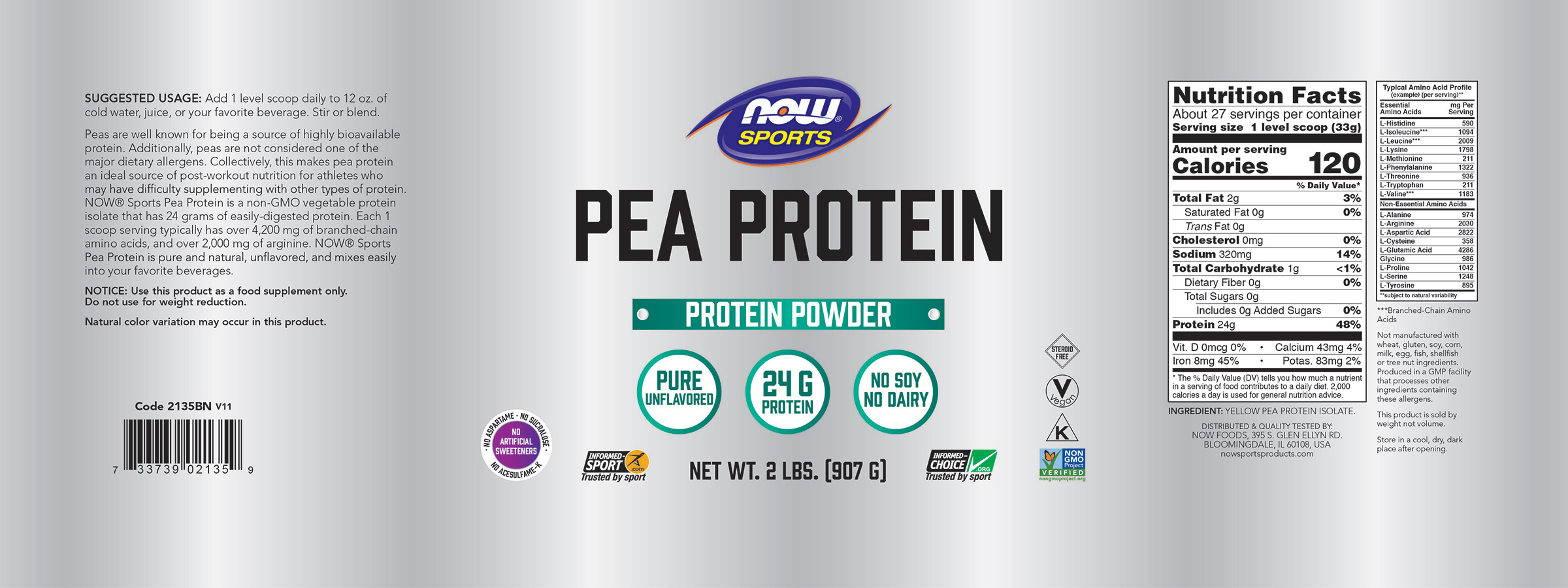
Aspartame on food labels
Nutrition Facts table formats - Food labels - Canadian Food … Although the Food and Drug Regulations (FDR) require the declaration of a Nutrition Facts table (NFt) on most prepackaged products, the information may be presented in a variety of different formats. Industry has considerable flexibility in presentation, and may choose from several different format "families". Within each format family, further choices of presentation style are … Why Does Aspartame Have a Warning Label? - Pediatric Education Aspartame (L-aspartyl-L-Phemethyl ester) is an artificial sweetener that metabolizes to Phe, L-aspartic acid and methanol. It was first discovered in 1965, and approved by the US Federal Drug Administration in 1981. en.wikipedia.org › wiki › Food_safety_incidents_in_ChinaFood safety incidents in China - Wikipedia In August 2007, AQSIQ introduced recall systems for unsafe food products and toys and on December 3, 2007, China ordered 69 categories of products to be bar-coded at factories amid efforts to improve product safety, in response to several recent incidents, including: "scares rang[ing] from ducks and hens that were fed cancer-causing Sudan Red ...
Aspartame on food labels. Sugar substitutes: Health controversy over perceived benefits A number of studies focused on the effects of aspartame on appetite/hunger and food intake,[44 ... Some agents are approved with warning labels too. So further exploration is required with well-designed large-scale studies in the general population. On the anecdotal evidence, it has been concluded that based on analysis of the database of case ... Aspartame - Wikipedia Aspartame is an artificial non-saccharide sweetener 200 times sweeter than sucrose and is commonly used as a sugar substitute in foods and beverages. It is a methyl ester of the aspartic acid/phenylalanine dipeptide with the trade names NutraSweet, Equal, and Canderel. First submitted for approval as a food ingredient in 1974, aspartame was approved by the US … Cancer: Sarcoma, Carcinoma, Lymphoma, and Leukemia - WebMD Get the basics on cancer from the experts at WebMD. Food safety incidents in China - Wikipedia Food safety incidents in 2003 Poisonous Jinhua ham. In 2003, several small producers of Jinhua hams (from Jinhua, Zhejiang) operated out of season and produced hams during warmer months, treating their hams with pesticides to prevent spoilage and insect infestation. The hams were soaked in the pesticide dichlorvos, which is a volatile organophosphate insecticide used for …
Aspartame Side Effects and Insulin Response: Is It Bad for You? As a decades-old ingredient in diet soda, aspartame, or additive number E951 on European food labels, is probably the best-known sweetener. It is a sugar-free and low-calorie artificial sweetener. Moreover, the sweetener is indispensable in the light and zero drinks of most global manufacturers. Complements Zero Calorie Aspartame Blue Sweetener Packets, … Sugar substitute: aspartame is an artificial sweetener typically found in blue packets. Food Service and budget friendly: great value, Bulk size of 2, 000 individual size packets ; Sweet! 1 packet contains the sweetness of 2 tsp of sugar. Perfect in tea and coffee. Great taste! Food With Aspartame - TheSuperHealthyFood Products containing aspartame must label it on the ingredients panel on the back or side of the product package. But, some food and beverage manufacturers have already begun removing aspartame as an NNU used in their products. ... In the United States, food ingredients, including aspartame, must be listed in the ingredient statement on the food ... › health › how-read-food-andHow To Read Food and Beverage Labels | National Institute on ... Feb 24, 2022 · Sometimes, food and beverage packaging includes terms that may try to convince the consumer the food is healthy. To help avoid confusion, the FDA sets specific rules for what food manufacturers can call “light,” “low,” “reduced,” “free,” and other terms. This type of labeling may have little to do with how nutritious the food is.
Food additives | Food Standards Agency Food additives are grouped by what they do. The additives that you are most likely to come across on food labels are: antioxidants – these stop food becoming rancid or changing colour by reducing the chance of fats combining with oxygen; colours; emulsifiers, stabilisers, gelling agents and thickeners – these help to mix or thicken ingredients inspection.canada.ca › food-labels › labellingNutrition Facts table formats - Food labels - Canadian Food ... The combined food is therefore not part of the serving size declaration. Sub-headings (next line of information) – "As sold" and, for a food that is served combined with another food, the sub-heading "Prepared" is replaced with the amount of added food in a household measure only (for example, "With ½ cup skim milk") [B.01.406(5)(a)(ii), FDR]. › pmc › articlesSugar substitutes: Health controversy over perceived benefits A number of studies focused on the effects of aspartame on appetite/hunger and food intake,[44–46] as it has been suggested that aspartame may have modulating effects on these body responses, even resulting in the converse effect than that intended, namely obesity rather than body weight maintenance or loss. The National Experts have noted ... Hidden Sources Of MSG And Aspartame In Foods Also: Protease Enzymes of various sources can release excitotoxin amino acids from food proteins. Aspartame - An Intense Source Of Excitotoxins Aspartame is a sweetener made from two amino acids, phenylalanine and the excitotoxin aspartate. It should be avoided at all costs. Aspartame complaints account for approximately 70 percent of ALL ...
What is other names for aspartame - Food Additives & Ingredients ... Aspartame has many names, Aspartame is one of the most common artificial sweeteners in use today. It is sold under the brand names NutraSweet and Ajinomoto, Aspartame is made by joining together the amino acids aspartic acid and phenylalanine. Amino acids are the building blocks of proteins and are found naturally in many foods.
How To Read Food and Beverage Labels - National Institute on Aging Feb 24, 2022 · Sometimes, food and beverage packaging includes terms that may try to convince the consumer the food is healthy. To help avoid confusion, the FDA sets specific rules for what food manufacturers can call “light,” “low,” “reduced,” “free,” and other terms. This type of labeling may have little to do with how nutritious the food is.
Is Aspartame Poisoning Real? - Healthline Feb 11, 2020 · If you think you may be sensitive to the sugar substitute, be sure to read food and beverage labels and try to choose aspartame-free products. Last medically reviewed on February 11, 2020 How we ...
Aspartame Products - Aspartame Aspartame Products Aspartame has been a sweetener in many low-calorie, sugar-free foods and beverages since the 1980's. Because aspartame is 200 times sweeter than sugar, less can be used to give the same level of sweetness. Thus, the use of aspartame lowers the calories in foods or beverages. 200 times sweeter than sugar
Aspartame - Canada.ca Aspartame. Aspartame, a low-calorie artificial sweetener, has been permitted for use as a food additive in Canada since 1981 in a number of foods including soft drinks, desserts, breakfast cereals and chewing gum and is also available as a table-top sweetener. It is made by the bonding together of the amino acids aspartic acid and phenylalanine ...
What is Aspartame? - Food Insight Aspartame is a type of low-calorie sweetener that consists of two amino acids—aspartic acid and phenylalanine. Aspartame is used as an ingredient to replace sugar in reduced-calorie foods and beverages, and it is also found in tabletop sweetener packets. The most common tabletop sweetener brand in the U.S. that contains aspartame is Equal®.
CFR - Code of Federal Regulations Title 21 - Food and Drug Administration The food additive aspartame may be safely used in food in accordance with good manufacturing practice as a sweetening agent and a flavor enhancer in foods for which standards of identity established under section 401 of the act do not preclude such use under the following conditions: ... The label of any food containing the additive shall bear ...
What is Aspartame (E951) in food? Uses, Safety, Side effects and More The purpose of aspartame in food is to reduce sugar and calories intake. And you may find it in many food, and here is a common food list that may with it: Carbonated soft drinks Powdered drink Instant coffee and tea beverages Fruit juice Tabletop sweeteners Dairy products Frozen desserts, puddings Yogurts Chewing gum Breath mints Candy Cereals
Aspartame (QA): What is it and what foods contain this additive ... Aspartame is a very thoroughly tested food additive with a comprehensive body of studies conducted in animal models and humans. All of these studies demonstrate that aspartame is safe. ... People can identify foods and drinks containing aspartame by looking at the ingredients list on the product label. Like all food additives approved for use ...
EUR-Lex - 32011R1169 - EN - EUR-Lex - Europa Food labels should be clear and understandable in order to assist consumers who want to make better-informed food and dietary choices. Studies show that easy legibility is an important element in maximising the possibility for labelled information to influence its audience and that illegible product information is one of the main causes of ...
› safety-hygiene › food-additivesFood additives | Food Standards Agency Food additives are grouped by what they do. The additives that you are most likely to come across on food labels are: antioxidants – these stop food becoming rancid or changing colour by reducing the chance of fats combining with oxygen; colours; emulsifiers, stabilisers, gelling agents and thickeners – these help to mix or thicken ingredients
PKU, Allergies and Other Sensitivities - Aspartame Some of the reported side effects from aspartame that have been tested include headaches, nausea, dizziness, nasal congestion, eczema, asthma, mood changes and tingling, but research to date has not confirmed these associations even when aspartame was provided in amounts far greater than people typically consume.
Additional Information about High-Intensity Sweeteners Labels of aspartame-containing foods and beverages must include a statement that informs individuals with PKU that the product contains phenylalanine. Acesulfame potassium (Ace-K) Acesulfame...
Everything You Need to Know About Aspartame - Food Insight Aspartame is a low-calorie sweetener that has been used for decades as a way to lower one's intake of added sugars while still providing satisfaction from enjoying something sweet. Aspartame is about 200 times sweeter than sugar, and as such only a small amount of the sweetener is needed to match the sweetness provided by sugar.
Aspartame is not marketed as AminoSweet on food labels While a company that produces aspartame did rename its product for marketing purposes in 2010, this was a move by only one company manufacturing aspartame. On food labels, aspartame still...
Mandatory labelling of sweeteners - Labelling requirements for ... In the case of aspartame, a statement, grouped with the list of ingredients [B.01.008(1), FDR], to the effect that aspartame contains phenylalanine. Check: Check: ... The label of a food containing polydextrose must indicate the amount of polydextrose, expressed in grams per serving of stated size [B.01.018, FDR]. The amount of polydextrose ...
A List of Foods Containing Aspartame | livestrong Aspartame is an artificial sweetener accidentally discovered by a scientist researching an anti-ulcer medication in 1965, according to the International Food Information Council Foundation. It's composed of two amino acids: aspartic acid and phenylalanine.
en.wikipedia.org › wiki › AspartameAspartame - Wikipedia Because aspartame contains a small amount of phenylalanine, foods containing aspartame sold in the US must state: "Phenylketonurics: Contains Phenylalanine" on product labels. [6] In the UK, foods that contain aspartame are required by the Food Standards Agency to list the substance as an ingredient, with the warning "Contains a source of ...
Woman reading food labels - Aspartame The Calorie Control Council, a non-profit association established in 1966, seeks to provide an objective channel of scientific-based communications about low-calorie foods and beverages, to assure that scientific and consumer research and information is made available to all interested parties.
en.wikipedia.org › wiki › Food_safety_incidents_in_ChinaFood safety incidents in China - Wikipedia In August 2007, AQSIQ introduced recall systems for unsafe food products and toys and on December 3, 2007, China ordered 69 categories of products to be bar-coded at factories amid efforts to improve product safety, in response to several recent incidents, including: "scares rang[ing] from ducks and hens that were fed cancer-causing Sudan Red ...
Why Does Aspartame Have a Warning Label? - Pediatric Education Aspartame (L-aspartyl-L-Phemethyl ester) is an artificial sweetener that metabolizes to Phe, L-aspartic acid and methanol. It was first discovered in 1965, and approved by the US Federal Drug Administration in 1981.
Nutrition Facts table formats - Food labels - Canadian Food … Although the Food and Drug Regulations (FDR) require the declaration of a Nutrition Facts table (NFt) on most prepackaged products, the information may be presented in a variety of different formats. Industry has considerable flexibility in presentation, and may choose from several different format "families". Within each format family, further choices of presentation style are …




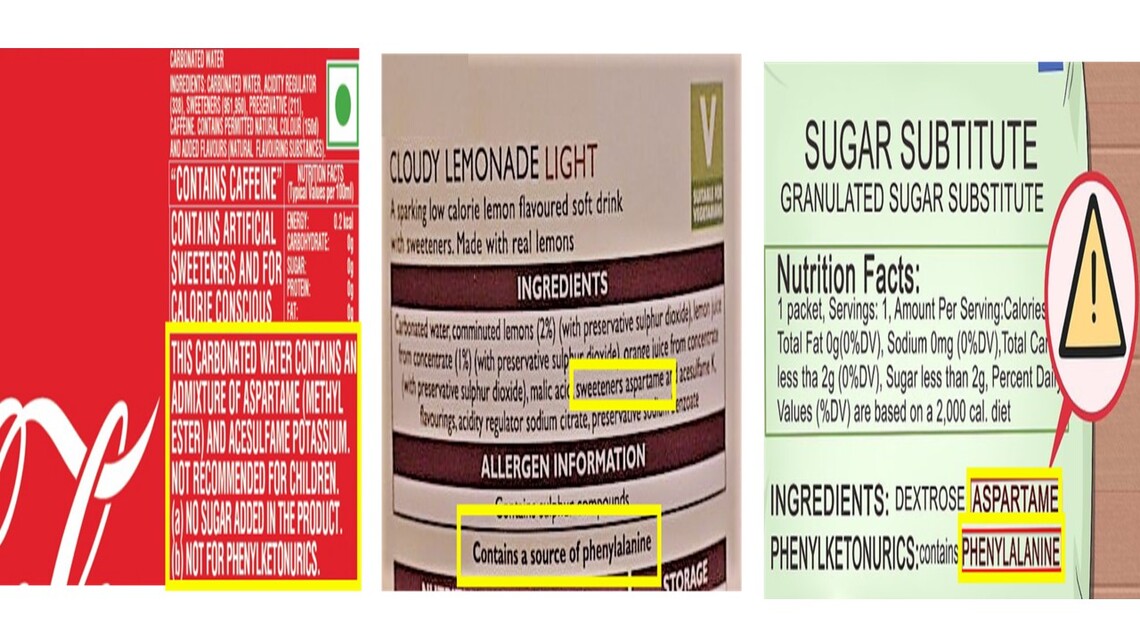


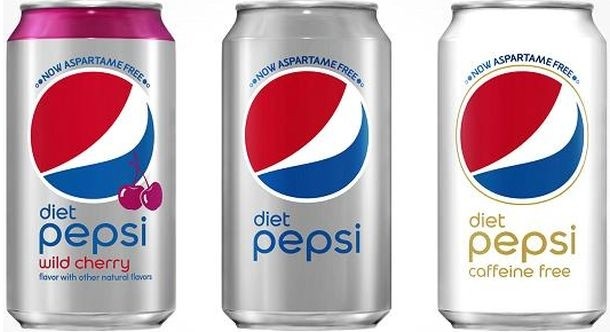


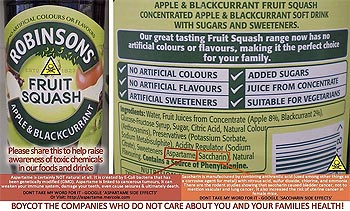


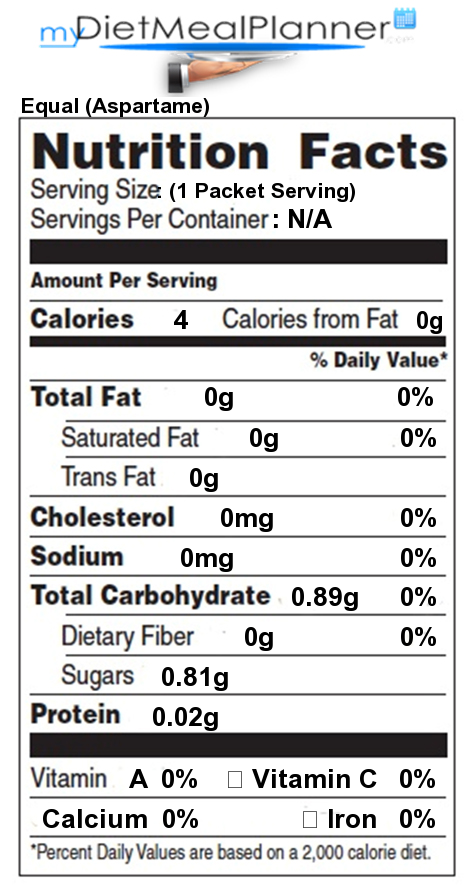

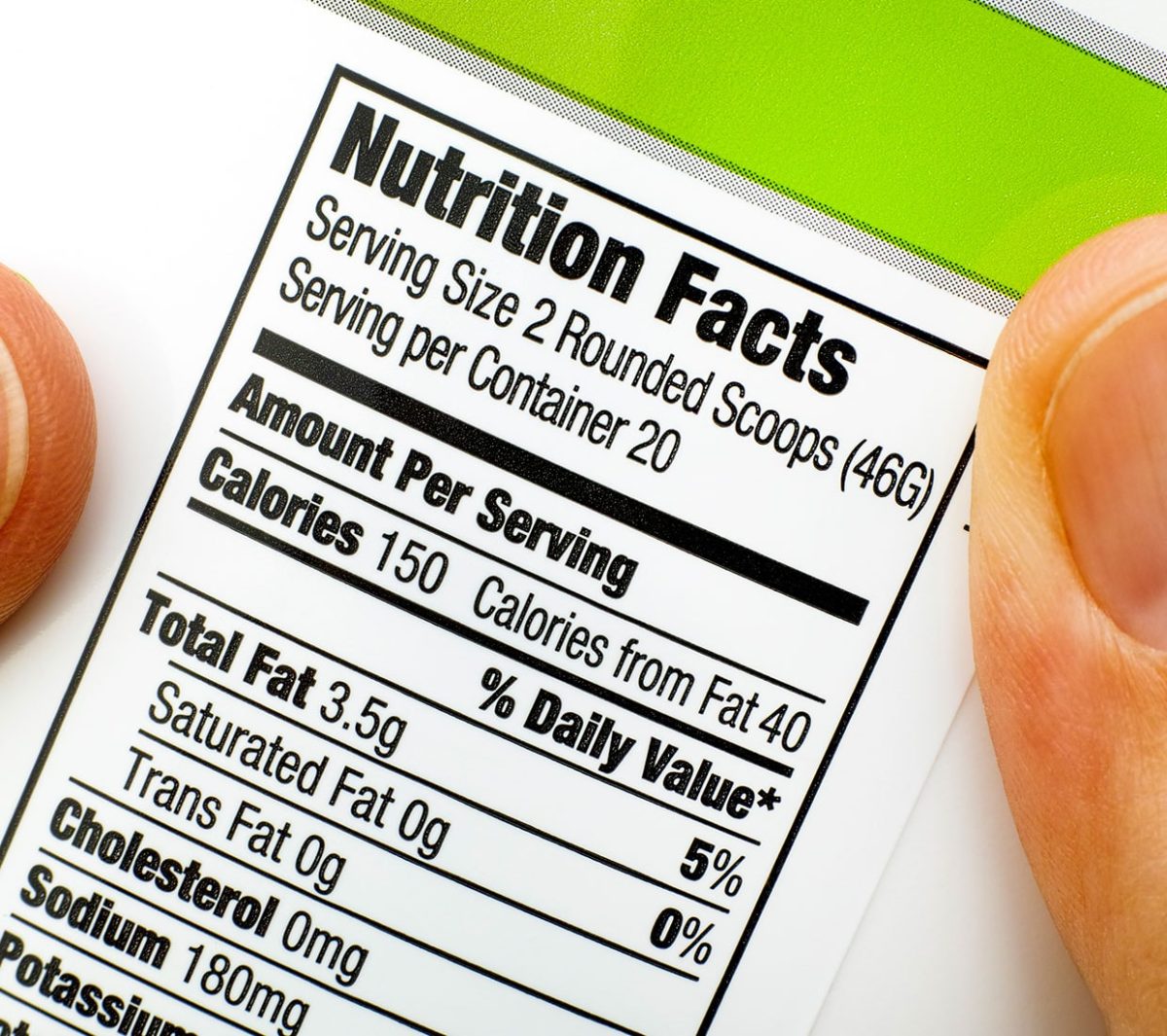


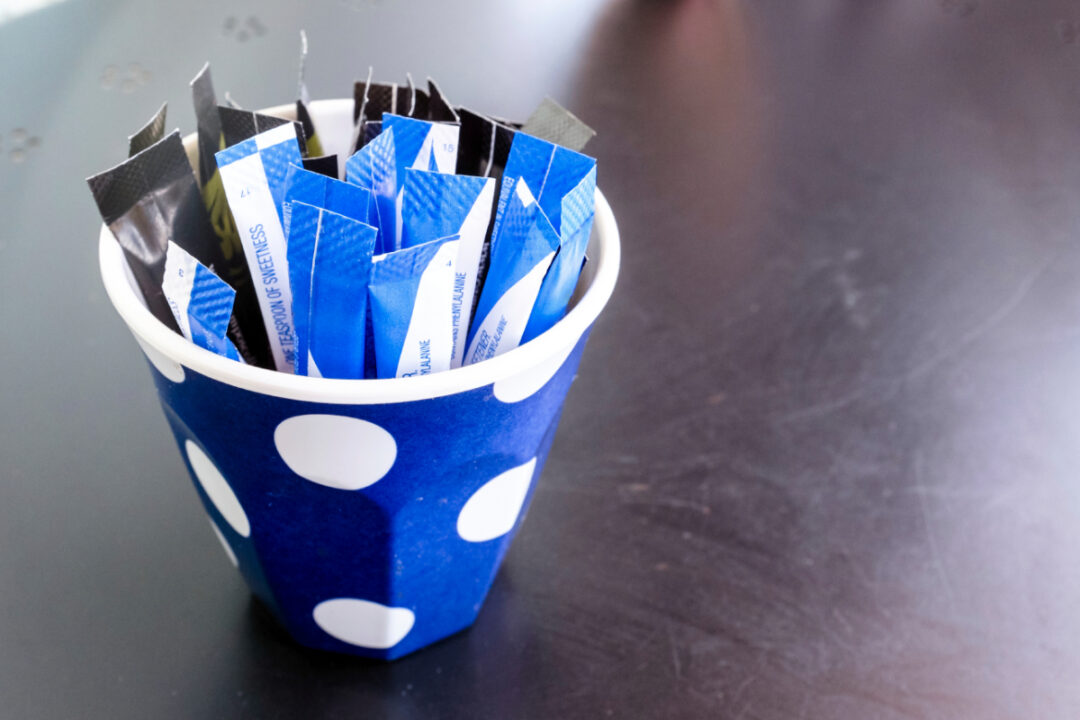



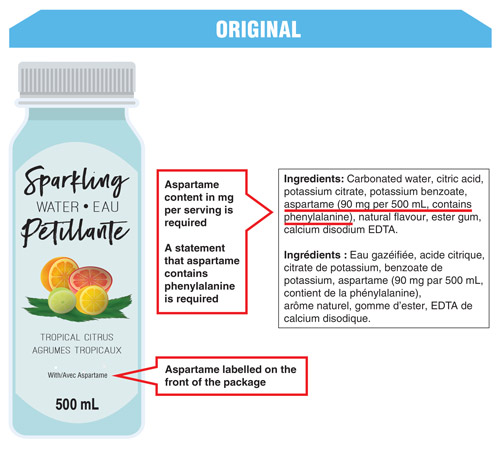


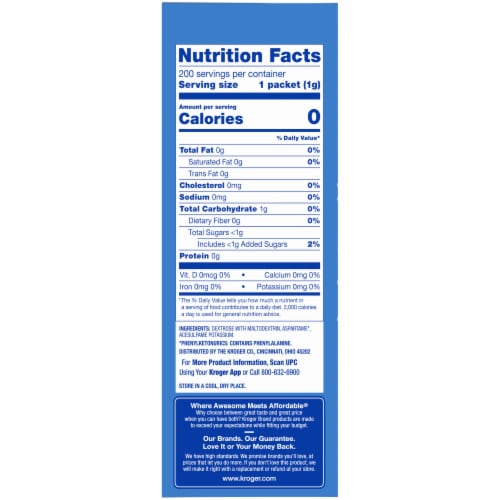
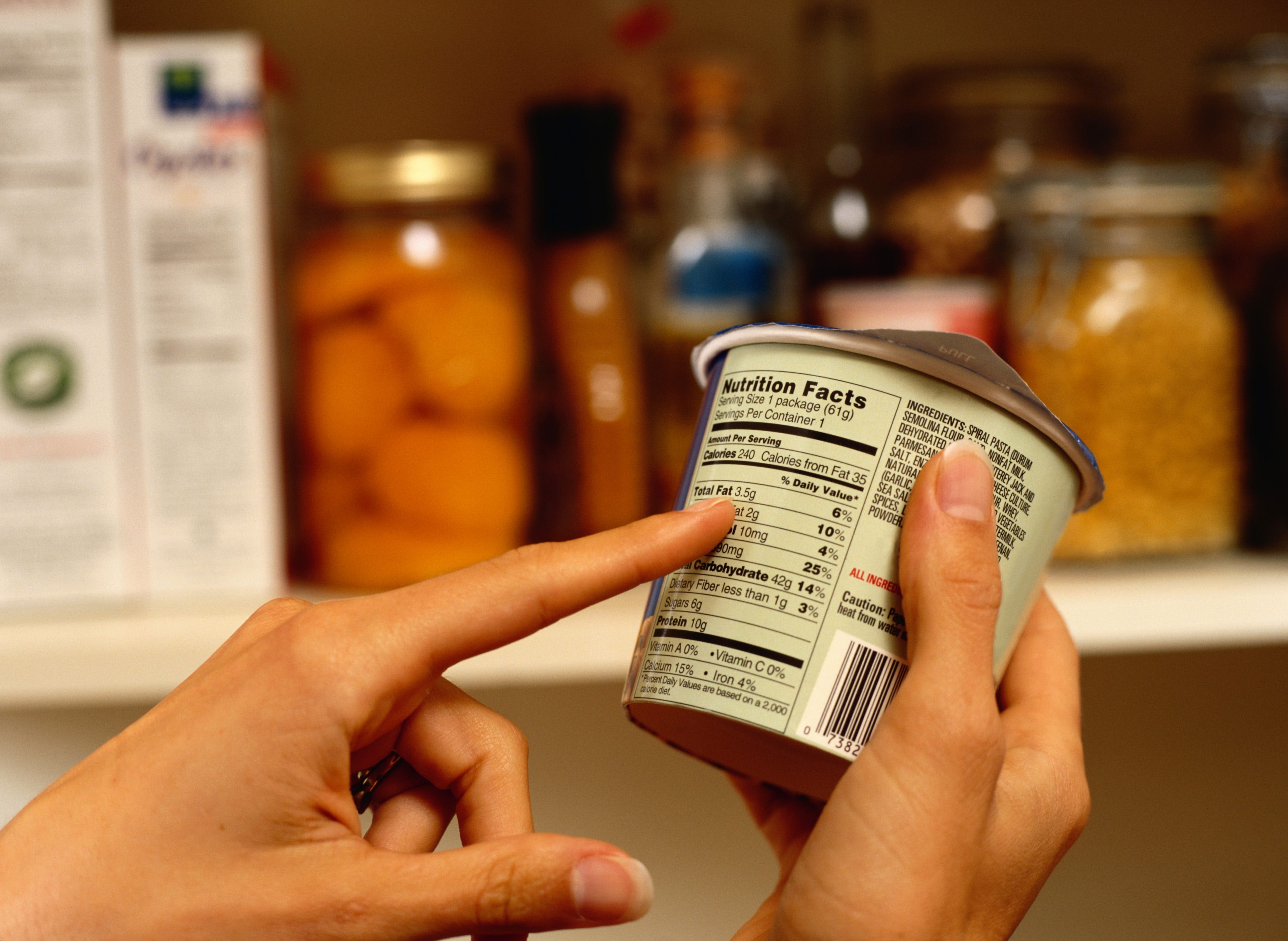
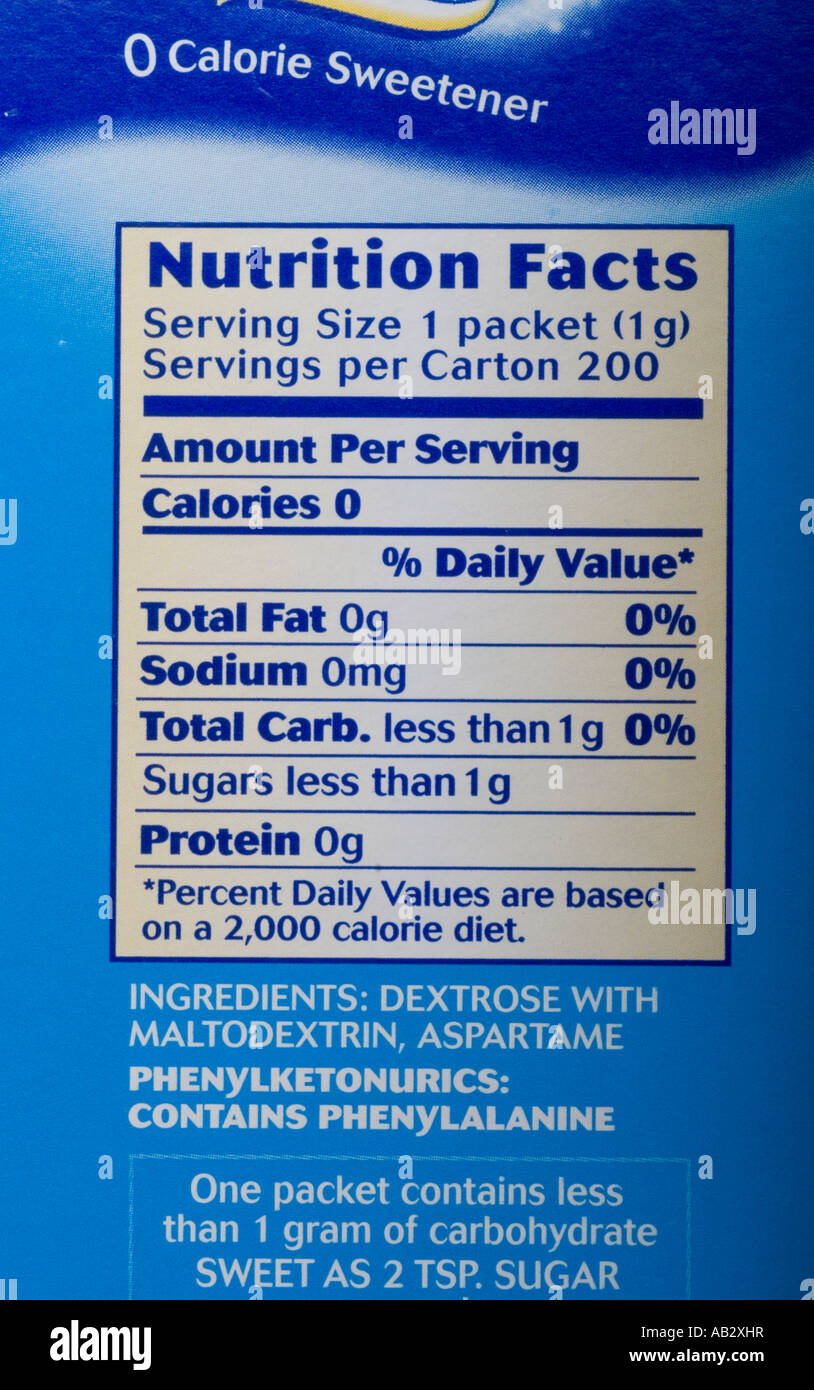


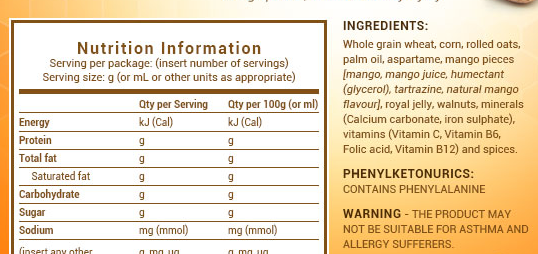
:format(jpg)/d2lnr5mha7bycj.cloudfront.net/product-image/file/large_88f1e1ca-7e1e-47dd-b527-cb2970aec129.png)





Post a Comment for "42 aspartame on food labels"